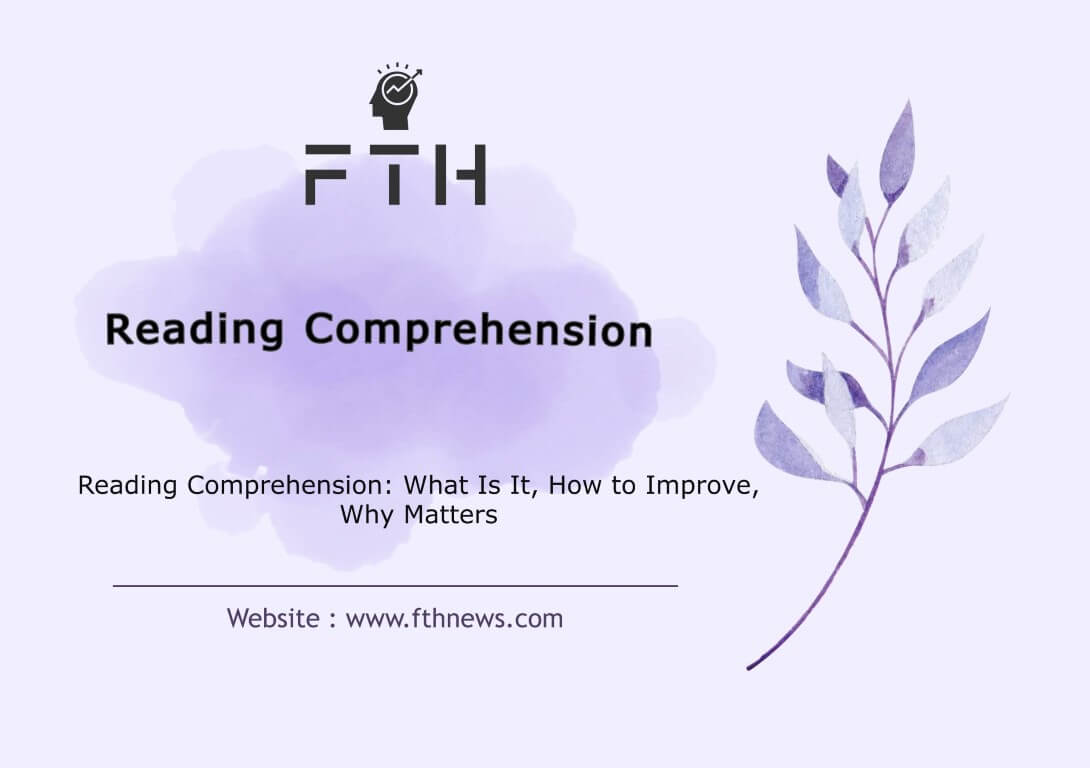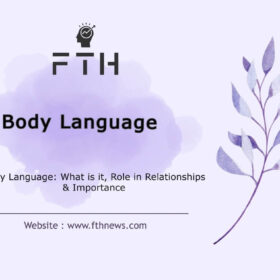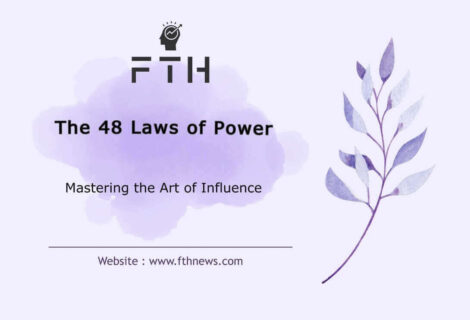
Reading Comprehension: What Is It, How to Improve, Why Matters
Reading comprehension is a crucial skill for individuals of all ages, influencing both educational endeavors and personal development. Unlike innate abilities, it is a skill that can be intentionally cultivated and improved. In this blog post, we will delve into the intricacies of reading comprehension, its definition, development paths, and effective strategies to enhance this essential skill.
What is Reading Comprehension?
Reading comprehension transcends the mere decoding of symbols on a page; it is a rich cognitive tapestry interwoven with attention, perception, memory, interpretation, synthesis, evaluation, and analysis. It goes beyond the surface, diving deep into the intricacies of language and thought. This skill encompasses the ability to navigate through written, visual, and electronic texts, extracting their meaning, and seamlessly integrating this understanding with the tapestry of existing knowledge.
Dispelling the notion that reading is a spontaneous process, it is essential to recognize it as a skill cultivated through intentional and persistent effort. Regardless of age, the journey to enhance reading comprehension skills is a vital aspect of extracting profound meaning from the written word. For both children and adults, this skill forms the bedrock of meaningful engagement with the vast realm of literature and information. By acknowledging the intentional nature of its development, individuals can embark on a purposeful journey towards unlocking the full potential of reading comprehension.
What Happens While Reading?
Understanding the intricate processes that unfold while reading not only unveils the complexity of this skill but also emphasizes its paramount importance:
Brain Activation:
Reading acts as a catalyst for neural activities, orchestrating a symphony of connections between the right and left parts of the brain. This stimulation not only strengthens existing neural pathways but also forges new ones, enhancing cognitive function and expanding the capacity for comprehension and analysis.
Symbol Decoding:
As the eyes traverse the page, they engage in a rapid dance, decoding symbols in succinct pauses. This decoding process is akin to translating a unique language, transforming written symbols into a cohesive tapestry of meaning. The deciphered essence is then swiftly dispatched to the brain, initiating a cascade of cognitive responses.
Immersion and Engagement:
The act of reading transcends the mere decoding of symbols; it is an immersive experience that captivates the reader’s imagination. It serves as a portal to another dimension, where words transform into vivid landscapes, characters, and emotions. This immersive engagement not only fosters academic intelligence by enhancing understanding but also nurtures emotional intelligence by evoking a myriad of feelings and perspectives.
As readers embark on this neurological odyssey, they not only absorb information but also actively participate in the intricate dance between language and cognition, enriching both their academic and emotional realms.
Reading Comprehension Proven Strategies for Success
To truly master the art of reading comprehension, one must navigate through strategic and adaptive approaches. Here are effective strategies tailored for individuals of all ages, fostering a deeper understanding of the text:
1. Asking Questions: Unveiling Layers of Understanding
- Engage in a dynamic interaction with the text by posing relevant questions. This strategy promotes the integration of information, identification of main ideas, and the art of summarization. By questioning the content, readers actively participate in the exploration of concepts, enhancing their comprehension.
2. Making Inferences: Unlocking Hidden Meanings
- Develop the skill of making inferences, a cognitive leap that allows readers to draw conclusions and evaluations beyond the explicitly provided details. Authors often leave subtle cues that beckon readers to connect the dots, making the reading experience richer and more insightful.
3. Guessing: Transforming Knowledge into Insight
- Turn reading into a dynamic dialogue by making informed guesses. This strategy involves leveraging existing knowledge to infer meanings from the text. Readers connect the dots between what they know and what is presented, creating a bridge to deeper comprehension and a more nuanced understanding.
4. Summarizing: Weaving a Tapestry of Understanding
- Transform the information into a cohesive tapestry by mastering the art of summarization. This involves synthesizing key points and explaining the text in one’s own words. Not only does summarizing facilitate quick retention, but it also enhances the ability to articulate and convey the essence of the material.
5. Visualization: Painting Pictures with Words
- Elevate comprehension by employing the power of visualization. Create mental images of the text, transforming words into vibrant scenes, characters, and concepts. Research suggests that readers who visualize while reading tend to retain information better, making this strategy a powerful tool for enhancing understanding.
By integrating these strategies into the reading process, individuals can embark on a journey of comprehensive exploration. These methods not only deepen the understanding of the text but also cultivate a more engaging and enriching reading experience for both adults and students alike.
How to Improve Reading Comprehension?
Improving reading comprehension is a valuable skill that can be honed through intentional effort. Here are actionable steps to enhance your ability to understand and engage with written material:
1. Understand Your Reading Habits: Foundation for Improvement
- Recognize Attention Patterns: Identify moments when your focus wavers during reading. Awareness of these patterns is the first step in addressing them.
- Build Endurance Gradually: Increase reading durations gradually to build endurance. Start with manageable intervals and extend the time as your attention span improves.
2. Expand Your Vocabulary: Gateway to Deeper Comprehension
- Contextual Understanding: Grasp word meanings through context. Pay attention to how words are used within sentences and paragraphs.
- Dictionary Exploration: Actively use a dictionary to delve into the definitions of unfamiliar words. A strong vocabulary forms the basis for comprehensive text understanding.
3. Read for Pleasure: Transforming Learning into Enjoyment
- Engage Emotionally with Texts: Choose materials aligned with your interests to make reading a pleasurable activity. Enjoyment enhances engagement and deepens comprehension.
- Natural Enhancement of Comprehension: Pleasure in reading naturally improves comprehension. When reading becomes enjoyable, the connection with the text deepens.
4. Summarize When Confused: A Tactical Pause for Clarity
- Halting for Clarity: When confusion arises, pause and summarize perplexing sections. This refocuses attention and reinforces understanding.
5. Read Out Loud: Breaking Mental Barriers
- Overcoming Mental Blocks: Read challenging passages aloud to break through mental barriers. Auditory engagement aids in visualizing the content.
6. Reread and Review: Cementing Understanding Through Repetition
- Irregular Reading: Deviate from the norm by reading sections irregularly. Revisit previous parts to reinforce understanding and interpret subsequent sections effectively.
7. Discuss with Others: Articulating Understanding for Mastery
- Explaining to Others: Solidify understanding by explaining the text to a friend. Articulating what you’ve learned helps identify areas for improvement and enhances mastery.
By incorporating these strategies into your reading routine, you embark on a purposeful journey toward heightened reading comprehension. Each step contributes to gradual progress, so embrace the process and enjoy the transformative experience of mastering this essential skill.
Why Reading Comprehension Matters:
Real reading is a cognitive journey involving critical thinking, learning, and the expansion of knowledge. At its core, comprehension is the art of not just reading words but processing and understanding the text. It transcends mere memorization, giving rise to mental models that extend far beyond the boundaries of individual words. This dynamic interplay between word reading and language comprehension is not just essential; it is the lifeblood of purposeful reading, engagement, and the sheer enjoyment of the written word.
1. Unlocking Critical Thinking:
- Beyond Surface-Level Understanding: Reading comprehension requires readers to delve beneath the surface, extracting nuanced meanings and understanding the subtle nuances embedded within the text. This process naturally cultivates critical thinking skills, encouraging readers to question, analyze, and interpret.
- Forming Connections: Comprehending text involves forming intricate connections between ideas, concepts, and real-world knowledge. This interweaving of information fosters a depth of understanding that goes beyond the confines of the text itself.
2. Facilitating Lifelong Learning:
- Building a Knowledge Foundation: Reading comprehension is not just about understanding the words on a page; it’s about building a foundation of knowledge. Each reading experience adds a layer to one’s understanding, contributing to continuous learning and intellectual growth.
- Adapting to Diverse Subjects: Proficient comprehension skills enable readers to navigate through diverse subjects, from literature to science, history to current affairs. This adaptability ensures a holistic and well-rounded approach to learning.
3. Forming Mental Models:
- Going Beyond Memorization: Comprehension involves more than memorizing isolated words. It is about creating mental models that capture the essence of the text, allowing readers to visualize, conceptualize, and retain information in a meaningful way.
- Constructing a Cognitive Framework: As readers comprehend, they construct a cognitive framework that organizes information cohesively. This framework serves as a mental scaffold, facilitating the retention and application of knowledge over time.
4. Essential for Purposeful Reading:
- Extracting Meaning with Intent: Reading comprehension transforms reading into a purposeful activity. It is not about mere word recognition but extracting meaning with intent, understanding the author’s message, and critically evaluating the content.
- Navigating Complex Texts: Proficient comprehension skills empower readers to navigate through complex texts, extracting valuable insights and making informed judgments. This is particularly crucial in academic and professional settings.
5. Fostering Engagement and Enjoyment:
- Immersive Reading Experiences: Comprehension turns reading into an immersive experience. It goes beyond the act of decoding words, immersing readers in the narrative, allowing them to connect emotionally, intellectually, and even empathetically with the content.
- Fueling Intrinsic Motivation: The ability to comprehend what one reads fosters intrinsic motivation. When readers understand and engage with the material, they find genuine pleasure in the act of reading, transforming it from a task into a source of joy.
In essence, reading comprehension is the catalyst that transforms reading from a mechanical exercise into a profound exploration of ideas, perspectives, and worlds. It is not just a skill; it’s a cornerstone of intellectual growth, lifelong learning, and the sheer joy of engaging with the written word.
What is the meaning of reading comprehension?
Reading comprehension refers to the ability to read and understand written text. It involves the interpretation of words, sentences, and passages, as well as the extraction of meaning and the creation of a coherent understanding of the material.
What is the main purpose of reading comprehension?
The main purpose of reading comprehension is to enable individuals to understand, analyze, and interpret written information effectively. It goes beyond word recognition, aiming to facilitate a deeper engagement with texts, fostering critical thinking, learning, and the extraction of meaningful insights.
What is a good reading comprehension?
A good reading comprehension involves the reader’s ability to understand and interpret a text accurately. It includes grasping the main ideas, making connections between concepts, and drawing inferences. Effective reading comprehension also reflects critical thinking skills and the capacity to engage with the material on a deeper level.
Is reading comprehension a skill?
Yes, reading comprehension is a skill. It encompasses a set of abilities, including decoding words, understanding vocabulary, recognizing sentence structures, and making inferences. This skill can be developed and improved with practice and strategic approaches.
What are the 3 most important elements of comprehension?
The three most important elements of comprehension include:
Decoding: Recognizing and understanding individual words.
Vocabulary: Grasping the meanings of words and their contextual usage.
Inference: Drawing conclusions or making educated guesses based on the information presented.
Do you lack reading comprehension?
No, as a machine learning model, I do not possess personal experiences, including lacking or having reading comprehension skills. However, individuals may experience challenges with reading comprehension, which can be addressed through various strategies and practices.
How do you fix poor reading comprehension?
To improve poor reading comprehension, individuals can:
Practice active reading techniques, such as asking questions while reading.
Expand their vocabulary through consistent reading and dictionary use.
Read a variety of materials to enhance familiarity with different writing styles.
Summarize information to reinforce understanding.
How do you fix low reading comprehension?
Improving low reading comprehension involves similar strategies, including:
Identifying and addressing specific challenges, such as difficulty with vocabulary or lack of focus.
Engaging in regular reading to build fluency and familiarity with different types of content.
Seeking support from educators, tutors, or online resources for targeted guidance.
What does poor reading comprehension lead to?
Poor reading comprehension can lead to academic challenges, including difficulties in understanding textbooks, extracting information from written exams, and comprehending complex instructions. It may also impact overall learning and hinder effective communication in various aspects of life. Addressing poor reading comprehension is crucial for academic and professional success.
Conclusion:
Improving reading comprehension is a journey that requires patience and consistent effort. By understanding the multifaceted nature of this skill and implementing effective strategies, one can embark on a path of continuous enhancement. Embrace the process, be patient, and remember that progress is achievable over time. Happy reading!














